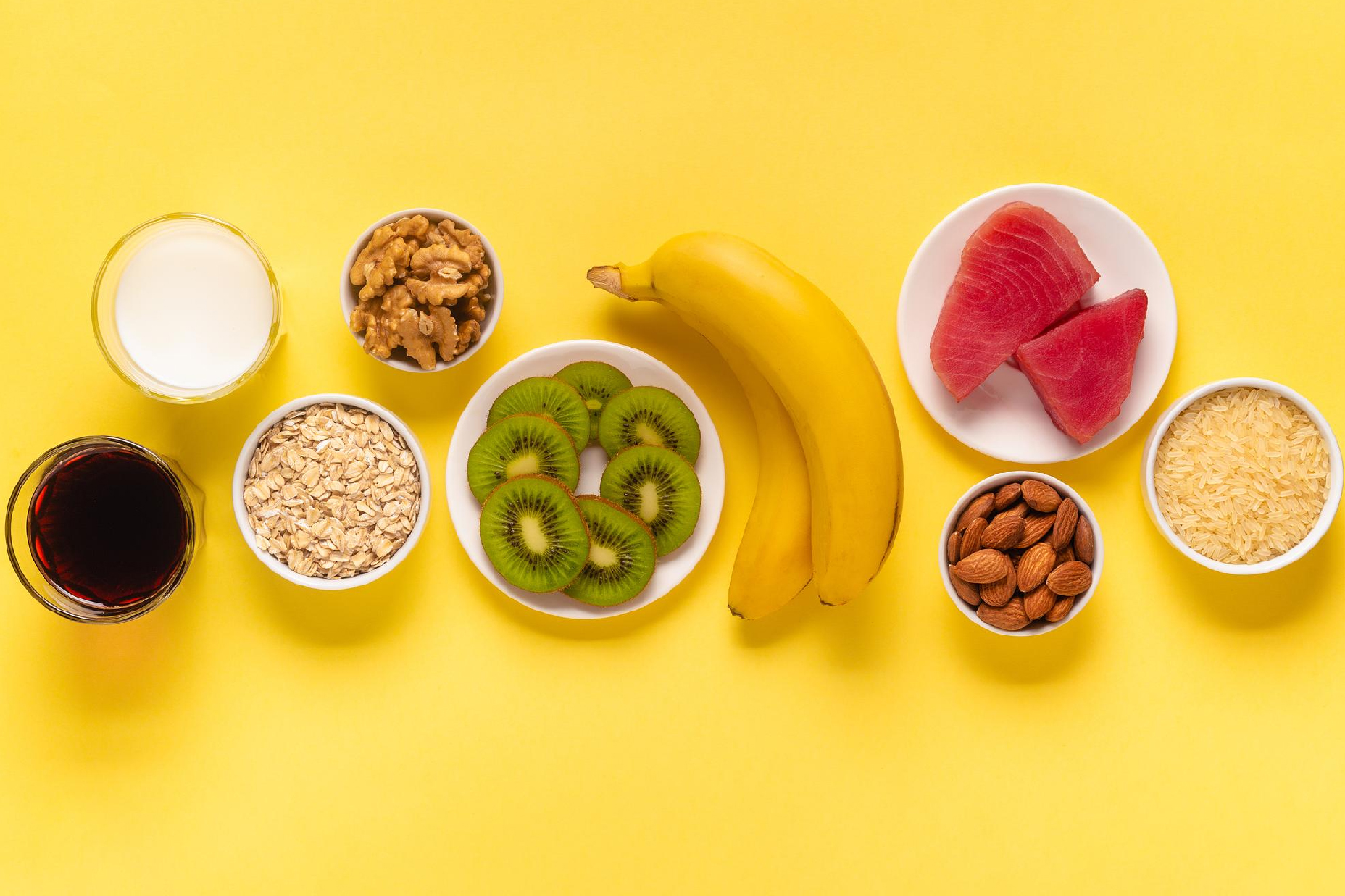Who doesn’t want to give their kids’ health a boost? But feeding them broccoli with a side of lectures won’t work anymore. Maybe now it’s time to sprinkle some fun into their meals with gut-friendly foods! We all know that, in the journey of raising healthy children, instilling good eating habits early on is paramount. As parents, educators, or caregivers, teaching kids about gut-friendly foods doesn’t only foster physical well-being but also educates them about the importance of maintaining a healthy digestive system. So, today, let us delve deep into the significance of gut health, explore a variety of gut-friendly foods, and learn some practical tips for incorporating them into children’s diets.
Understanding Gut Health and Gut-Friendly Foods
Some of you may know that the gut is often referred to as the ‘second brain,’ but did you know just how important it is for our overall well-being? It’s not just a digestive powerhouse; it’s a bustling ecosystem teeming with trillions of microorganisms, collectively known as the gut microbiota. These little guys aren’t just aiding digestion; they’re also boosting our immune systems and even influencing our mood and behavior. Maintaining a balanced and diverse gut microbiota isn’t just a nice-to-have; it’s essential for optimal health. When the balance gets thrown off, it means trouble and causes digestive issues, weakened immunity, and other health problems.
That’s where gut-friendly foods come in. Gut-friendly foods are like the VIPs of the culinary world – they promote the growth and diversity of beneficial bacteria in the gut, keeping everything ticking along smoothly. By incorporating gut-friendly foods into your children’s diets, you’re not just nourishing their bodies; but you’re laying down the groundwork for a lifetime of wellness. So now, let’s get ready to dive in and explore a world of gut-friendly foods that will leave your kids’ tummies smiling!
Gut-Friendly Foods for Kids

While you must always aim for a balanced diet for your children, following are some specific types of foods you definitely need to include in their diet.
- Fruits and Vegetables: Encourage children to eat a variety of colorful fruits and vegetables, as they are rich in fiber, vitamins, and antioxidants. Fiber, in particular, acts as fuel for beneficial gut bacteria and helps promote regular bowel movements. Alos, include options like berries, apples, bananas, carrots, broccoli, and leafy greens in their meals and snacks.
- Whole Grains: Opt for whole grains such as brown rice, quinoa, oats, and whole wheat bread over refined grains. Whole grains are high in fiber and other nutrients that support digestive health. Experiment with whole grain options in recipes for sandwiches, wraps, and breakfast cereals to make them more appealing to children.
- Probiotic Foods: Introduce children to probiotic-rich foods like yogurt, kefir, and fermented vegetables such as sauerkraut and kimchi. Probiotics are beneficial bacteria that help maintain a healthy balance in the gut microbiota. Consider offering them as snacks to support digestive health.
- Prebiotic Foods: Include prebiotic foods in children’s diets to nourish the beneficial bacteria already present in their guts. Prebiotics are non-digestible fibers found in foods like bananas, onions, garlic, asparagus, and whole grains. These foods serve as food for probiotics, helping them thrive inside our gut.
- Lean Proteins: Also add lean protein sources such as poultry, fish, eggs, beans, and tofu into children’s meals. Protein is essential for growth and development, and including a variety of sources ensures they receive nutrients good for overall health, as well as gut health.
Practical Tips for Teaching Kids About Gut-Friendly Foods

Knowing all this isn’t enough as the biggest challenge you’ll face as parents would be to get your kids to listen to you. But with the following tips, you just might be able to achieve that:
- Lead by example as children learn by observing. So be a positive role model by demonstrating healthy eating habits yourself.
- Make it fun, get creative with food presentation, and involve children in meal planning and preparation. For example, make fun shapes out of fruits and vegetables, or create colorful smoothie bowls etc.
- Educate through experience by taking children on grocery store outings and teaching them about types of gut-friendly foods. Also, let them select fruits, vegetables, and other healthy ingredients.
- Introduce children to a wide variety of gut-friendly foods from an early age to expand their palate and preferences.
- Be patient and persistent as encouraging children to try new foods may take time. So, be patient with their preferences and continue offering a variety of gut-friendly options without pressure or coercion.
By teaching children about gut-friendly foods and incorporating them into their diets, we empower them to make healthy choices that support their overall well-being right from a young age. With a foundation of good eating habits established early in life, children are better equipped to lead healthy and fulfilling lives. So, as you fill their plates with healthful delights, you’re laying down the groundwork for a lifetime of happy, well-fed bellies. Because a healthy gut today means a happier tomorrow!
REFERENCES
1. Better Health – https://www.betterhealth.vic.gov.au/health/healthyliving/gut-health#:~:text=Your%20gut%20is%20your%20gastrointestinal,medical%20professionals%20and%20the%20community.
2. Healthline – https://www.healthline.com/health/gut-health
4. Stanfordchildrens – https://www.stanfordchildrens.org/en/topic/default?id=5-ways-to-boost-your-childs-gut-health-197-29161
5. Parents – https://www.parents.com/health/hygiene/5-ways-to-boost-your-kids-gut-health/
6. Viome – https://www.viome.com/blog/5-ways-to-teach-your-kids-healthy-eating-habits
FAQ’s
Q: Are there any specific gut-friendly foods that picky eaters might enjoy?
A: Yes, picky eaters can still enjoy gut-friendly foods like yogurt, applesauce, whole grain toast, and mashed sweet potatoes. These options are mild in flavor and easy to incorporate into familiar dishes to encourage acceptance.
Q: Are there any age restrictions on introducing gut-friendly foods to children, such as infants or toddlers?
A: Gut-friendly foods can be introduced to infants and toddlers as soon as they start eating solid foods. However, it’s essential to choose age-appropriate options such as mashed fruits, cooked vegetables, and infant cereals to avoid choking hazards.
Q: How can I tell if my child’s digestive system is benefiting from gut-friendly foods?
A: Signs that your child’s digestion is improving with gut-friendly foods include regular bowel movements, reduced bloating or gas, and improved overall comfort after meals. Additionally, you may notice improvements in mood and energy levels.
Q: Can gut-friendly foods help with childhood constipation or diarrhea?
A: Yes, gut-friendly foods rich in fiber, such as fruits, vegetables, whole grains, and probiotic-rich yogurt, can help regulate bowel movements and alleviate symptoms of constipation. Probiotics in yogurt can also aid in restoring balance to the gut microbiota and easing diarrhea symptoms.
Q: What nutrients or ingredients should I look for in gut-friendly foods?
A: Look for gut-friendly foods that are high in fiber, prebiotics, and probiotics. Fiber-rich options include fruits, vegetables, and whole grains, while prebiotics can be found in foods like bananas, onions, and garlic. Probiotics are present in yogurt, kefir, and fermented vegetables.




